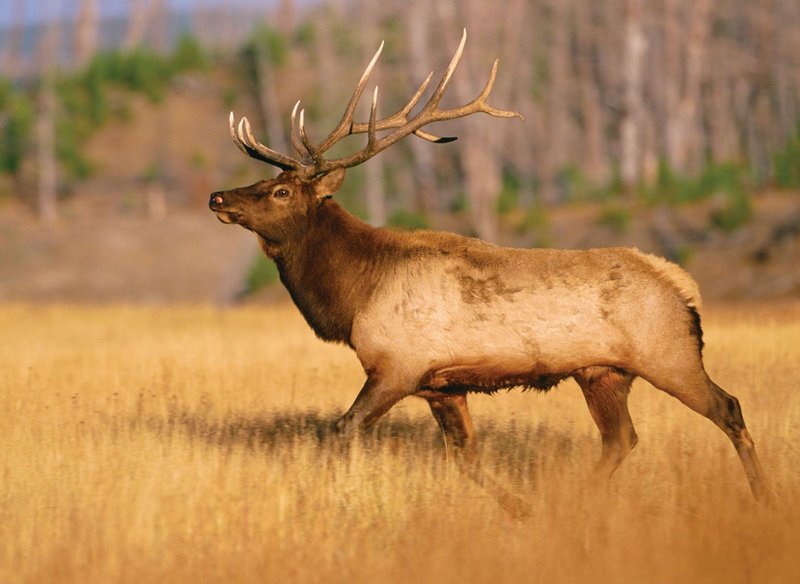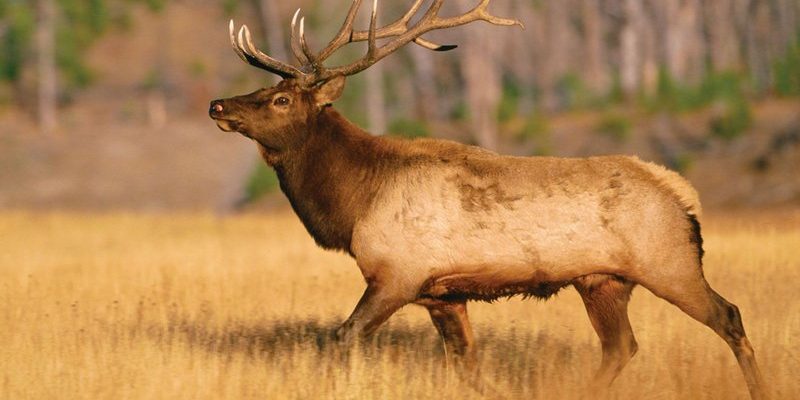
Imagine standing in a vast, serene forest, the sun filtering through the trees, and then you hear it—a deep, resonant call that echoes through the air. That’s the wapiti, also known as elk, a magnificent creature that embodies the spirit of the wild. With its impressive antlers, slender legs, and graceful movements, the wapiti has captivated the hearts of nature lovers and outdoor enthusiasts alike. But there’s more to this majestic animal than meets the eye.
The wapiti belongs to the deer family and is one of the largest species in the group. Typically, you’ll find them roaming in the forests, meadows, and even mountainous terrains of North America and parts of Asia. They are often associated with untamed wilderness, symbolizing strength and beauty. So, what makes them so fascinating? Let’s dive deeper into their world!
Physical Characteristics
The wapiti is a spectacular sight. Adult males, or bulls, can weigh anywhere from 700 to 1,100 pounds, while females, called cows, usually range from 500 to 600 pounds. Their long, slender legs allow them to traverse rocky terrains and graceful strides, while their bodies are built for endurance. A key feature of the wapiti is its antlers, which can grow up to four feet long! These impressive appendages are shed annually and regrow each year, a fascinating cycle of nature.
Wapiti have a distinctive coloration, with a light tan or brown body that becomes darker in winter. Their necks are somewhat thick, contributing to a robust appearance, while their fur is short and coarse. In spring and summer, you might notice their coats shimmering in the sunlight, adding to their allure. Females, on the other hand, lack antlers entirely, focusing instead on raising their young.
Habitat and Range
Wapiti are highly adaptable animals, thriving in a variety of habitats. You’ll often find them in temperate forests, grasslands, and mountainous regions. Their preferred environments are typically open woodlands or areas near water sources, where they can graze on grass, leaves, and shrubs. These habitats provide not just food but also protection from predators.
In North America, wapiti are primarily found in the western regions, including Canada and the northern United States. However, they also inhabit parts of Asia, particularly in places like Mongolia and Russia. Historically, wapiti roamed more widely, but habitat loss and hunting have reduced their range considerably. Conservation efforts are vital to ensure that these magnificent creatures continue to thrive in the wild.
Diet and Feeding Habits
Wapiti are herbivores, which means they primarily eat plants. Their diet mainly consists of grasses, leaves, bark, and fruits. They are known to graze in the early morning and late evening, ensuring they get the best nutrition while avoiding the heat of the day. You might even catch them munching on tender shoots in spring, their favorite treat as the landscape comes alive with greenery.
What’s interesting is that wapiti have complex digestive systems, specifically designed to break down tough plant materials. They are ruminants, which means they regurgitate food to chew it again—like cows do. This process helps maximize the nutrients they get from their food. Ensuring they have access to diverse habitats is crucial, as it allows them to forage for a wide range of plants, contributing to their health and well-being.
Breeding and Lifespan
The breeding season for wapiti, known as the rut, typically occurs in the fall. During this time, bulls engage in elaborate displays to attract mates, including deep vocalizations and physical confrontations with rivals. It’s a time filled with excitement, as the air buzzes with energy. If you’re lucky enough to witness this spectacle, it’s an experience you won’t forget!
After mating, females give birth to a single calf after a gestation period of about 240 days. Newborn wapiti are incredibly vulnerable, and mothers often hide their calves in dense vegetation to protect them from predators. The calves grow quickly, taking their first steps within hours of being born. In the wild, wapiti can live up to 10-15 years, but they can live longer in protected environments, such as national parks or reserves.
Conservation Status
Despite their resilience, wapiti populations faced significant declines due to overhunting and habitat loss throughout the 19th and early 20th centuries. Conservation efforts have played a crucial role in helping their numbers recover. Today, major organizations and wildlife reserves work tirelessly to protect and preserve wapiti habitats from development and fragmentation.
In many regions, wapiti are now thriving again. They are often managed through regulated hunting, which helps maintain healthy populations and ecosystems. Yet, ongoing threats like climate change and habitat destruction remain serious concerns. It’s vital for all of us to take action to protect these majestic creatures—after all, they are a key part of our natural heritage.
Interesting Facts About Wapiti
| Scientific Name: | Cervus canadensis |
| Weight: | 500-1,100 pounds |
| Height: | 4.5-5 feet at the shoulder |
| Diet: | Grasses, leaves, bark, fruits |
| Habitats: | Forests, grasslands, mountainous regions |
| Lifespan: | 10-15 years in the wild |
Wapiti in Culture
The wapiti has a special place in various cultures. In many Native American tribes, this animal symbolizes strength, grace, and the spirit of nature. Stories and traditions often celebrate the wapiti, highlighting its importance to local ecosystems and human life. For example, the wapiti is featured in art, ceremonies, and folklore, representing a connection to the land and the wildlife that inhabits it.
Additionally, the wapiti is a popular subject in wildlife documentaries and nature photography. Its majestic presence makes it a sought-after sight in national parks, where thousands of visitors flock each year to catch a glimpse of these beautiful creatures. They remind us of the beauty of the wild and the importance of conservation, urging us to appreciate and protect the ecosystems that sustain them.
Wapiti vs. Other Deer Species
While wapiti may share the same family as other deer, such as white-tailed deer or mule deer, they are distinctly different in several ways. For starters, wapiti are significantly larger and have unique antler shapes that set them apart. While most deer species sport branching antlers, wapiti antlers are broader and can grow substantially larger, making them stunning to behold.
Another key difference lies in their social behavior. Wapiti are more social animals, often forming herds, especially during the rut and winter months. In contrast, other deer species may prefer a more solitary lifestyle. This social structure allows wapiti to communicate more effectively and helps protect them from predators through collective vigilance.
Future of Wapiti
The future of wapiti depends on ongoing conservation efforts and public awareness. As habitats change due to human activities and climate change, it’s essential to monitor their populations and adapt strategies to manage their well-being. We can all play a part in this effort by supporting wildlife organizations, participating in conservation programs, or simply spreading awareness about the importance of protecting these magnificent animals.
Engaging with communities, educating ourselves, and advocating for wildlife can significantly impact the wapiti’s future. By ensuring that these majestic creatures have the space and resources they need, we can help preserve not just the wapiti but the rich tapestry of wildlife that exists alongside them.
FAQ
What is a wapiti?
The wapiti, also known as elk, is a large member of the deer family, native to North America and parts of Asia. They are known for their impressive antlers and distinct vocalizations during the mating season. Wapiti thrive in a variety of habitats, including forests and grasslands, and play a vital role in their ecosystems.
How big do wapiti get?
Wapiti are among the largest deer species, with adult males typically weighing between 700 and 1,100 pounds, and females weighing about 500 to 600 pounds. They can reach heights of 4.5 to 5 feet at the shoulder, showcasing their impressive build, especially the bulls with large antlers that can span several feet.
What do wapiti eat?
Wapiti are herbivores and primarily feed on grasses, leaves, and shrubs. They are known to graze during early mornings and late evenings, allowing them to maximize their foraging while avoiding the heat of the day. Their diet is crucial for their health, contributing to their ability to thrive in various habitats.
Are wapiti social animals?
Yes, wapiti are social creatures, often seen in herds, especially during the rutting season and winter months. Being in groups helps them protect each other from predators and fosters a sense of community. This social behavior allows for better communication among individuals, enhancing their survival in the wild.
How long do wapiti live?
In the wild, wapiti can live up to 10-15 years, although they may enjoy longer lifespans in protected areas like national parks. Their longevity depends on various factors, including habitat quality, food availability, and protection from hunting or predation.
What is the breeding season for wapiti?
The breeding season, known as the rut, typically occurs in the fall. During this time, male wapiti engage in vocalizations and displays to attract females. If successful, females give birth to a single calf after a gestation period of about 240 days. The rut is a fascinating time, filled with energy and competition among males.
Are wapiti endangered?
Wapiti are not considered endangered, but their populations faced significant declines in the past due to habitat loss and hunting. Conservation efforts have been instrumental in helping their numbers recover, though ongoing threats like climate change and habitat fragmentation remain concerns that need to be addressed.
How can I see wapiti in the wild?
To see wapiti in their natural habitats, visiting national parks known for their wapiti populations is a great option. Parks like Yellowstone, Rocky Mountain, and Grand Teton are famous for their stunning landscapes and abundant wildlife, including wapiti. Early morning or late evening is often the best time to spot these majestic creatures.
What are common predators of wapiti?
Wapiti can fall prey to several predators in the wild, particularly wolves, mountain lions, and bears. However, their size and social behavior, such as living in herds, help protect them from these threats, as they can collectively keep watch for danger.
How do wapiti adapt to their environments?
Wapiti are incredibly adaptable animals. They can thrive in various habitats, adjusting their diets and behaviors in response to seasonal changes. For example, during the winter months, they migrate to lower elevations where food is more accessible, demonstrating their ability to navigate complex environments for survival.
What role do wapiti play in their ecosystem?
Wapiti play a crucial role in maintaining healthy ecosystems. As herbivores, they help control plant populations, promoting biodiversity. Their grazing also creates space for new plant growth, which benefits other species. Additionally, they serve as prey for larger predators, contributing to the ecological balance.

